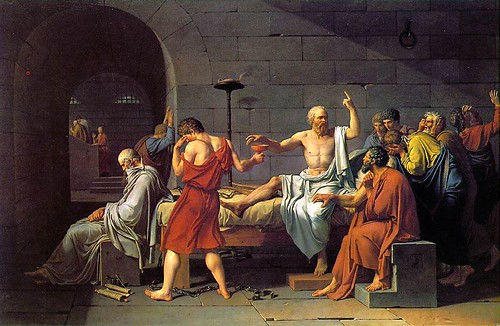
Look how solemn they are![1] from Los Caprichos by Francisco de Goya
Once again I am reminded of “To Every Man His Chimera,” one of the darkest prose poems of Charles Baudelaire.
The previous time Baudelaire’s unlucky men came to my recollection, trudging through the dust carrying upon their backs an enormous chimera as heavy as a sack of flour or coal, was while reading Joko’s Anniversary[2] (perhaps my finest reading experience of 2013, along with the many Cortázar‘s short stories I’ve had the pleasure to read).
This time the occasion is my recent acquisition of Goya : Caprichos, Desastres, Tauromaquia, Disparates (1982, Fundación Juan March), a complete set of all the engravings by Goya.
“Look how serious they are!” is number 63 from 80 prints of the Caprichos and it depicts “two demons taking a little exercise, and riding on grotesque beasts. One demon has the head of a bird, the other of a donkey.” (source) The pack animals, the grotesque beasts, look like bipedal donkeys with faces half human, half donkey.
Creatures with the head of a bird are frightening. The wattle!, the comb!
The reverse motif, creatures with the feet of birds, has been employed in Un priape marchant sur des pattes de coq, with a far less frightening — yes, even ludicrous — effect.
_is_an_oil_on_canvas_(26x19cm)_painted_by_Antoine_Watteau.jpg)







